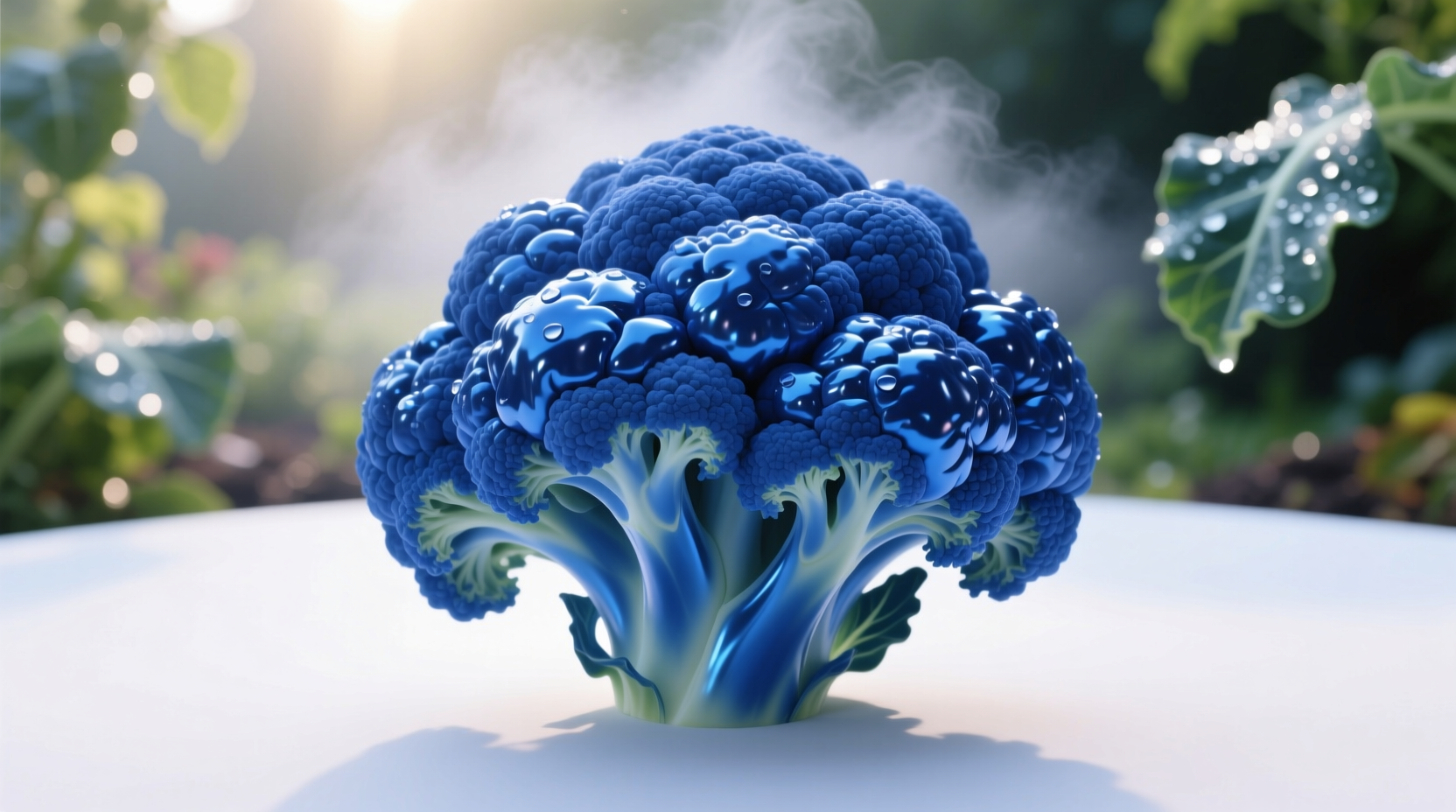When you encounter cauliflower with unexpected blue or purple tones, your first concern is likely safety. Rest assured, this coloration represents a natural genetic trait in certain cauliflower varieties, not a sign of spoilage or chemical contamination. The vibrant hues come from anthocyanins, water-soluble pigments that serve as powerful antioxidants and appear in many fruits and vegetables.
Understanding the Science Behind Blue Cauliflower
Anthocyanins create blue, purple, and red colors in plants depending on pH levels and genetic factors. In cauliflower, these pigments develop primarily in the curd (the edible head) when specific heirloom varieties are exposed to sunlight during growth. Unlike white cauliflower which has been selectively bred to minimize pigment production, purple and blue varieties maintain their natural anthocyanin expression.
How Blue Cauliflower Develops: A Natural Timeline
The color development follows a predictable pattern:
- Seedling stage: No visible coloration appears
- Early growth (2-4 weeks): Subtle purple tinges may appear on leaf veins
- Head formation (6-8 weeks): Anthocyanins concentrate in the curd as it develops
- Maturation (10-12 weeks): Full color expression becomes visible, ranging from light lavender to deep violet
- Post-harvest: Color remains stable when stored properly but may fade slightly when cooked
Blue Cauliflower vs. Traditional White Varieties
| Characteristic | Blue/Purple Cauliflower | White Cauliflower |
|---|---|---|
| Natural Pigments | Anthocyanins (15-25% higher concentration) | Negligible pigment content |
| Antioxidant Levels | Significantly higher (comparable to red cabbage) | Lower, but still substantial |
| Flavor Profile | Slightly sweeter, more complex | Classic mild cauliflower flavor |
| Color Stability | Fades with alkaline cooking; retains color in acidic preparations | May yellow with age or improper storage |
| Culinary Uses | Raw applications showcase color; steaming preserves most pigment | Versatile for all cooking methods |
When Blue Color Indicates a Problem
While most blue hues in cauliflower are natural, certain color changes warrant caution. Blue or green discoloration appearing after purchase could indicate:
- Reaction with aluminum cookware during preparation
- Excessive exposure to copper-containing water
- Rare cases of mold development (appears fuzzy, not uniform)
Natural blue cauliflower displays uniform coloration throughout the curd with no fuzzy textures or unpleasant odors. If your cauliflower develops blue spots in storage accompanied by sliminess or sour smell, discard it as these indicate spoilage.
Nutritional Advantages of Colored Cauliflower
Research from the USDA Agricultural Research Service confirms that purple and blue cauliflower varieties contain significantly higher levels of anthocyanins than their white counterparts. These compounds provide:
- Enhanced antioxidant protection against cellular damage
- Potential cardiovascular health benefits
- Anti-inflammatory properties
- Improved visual appeal that encourages vegetable consumption
The nutritional profile otherwise remains similar to white cauliflower—low in calories, high in vitamin C and fiber. Cooking methods affect pigment retention: steaming preserves more anthocyanins than boiling, while roasting creates beautiful color contrast.
Practical Handling and Preparation Tips
Maximize both flavor and visual appeal when working with blue cauliflower:
- Store unwashed in perforated plastic bag in refrigerator crisper drawer
- Consume within 5-7 days for optimal color retention
- Add lemon juice or vinegar when cooking to preserve vibrant hues
- Pair with complementary colors like golden turmeric or bright green herbs
- Avoid alkaline cooking environments which turn anthocyanins green
When preparing blue cauliflower, remember that the color naturally intensifies when raw and may mellow slightly during cooking. This variation represents nature's artistry rather than any quality issue. Many chefs intentionally select colored varieties for their visual drama in composed dishes and salads.

Common Questions About Blue Cauliflower
Many home cooks encounter colored cauliflower for the first time and have understandable questions about its safety and characteristics. Understanding these natural variations helps reduce food waste and encourages exploration of diverse produce options.











 浙公网安备
33010002000092号
浙公网安备
33010002000092号 浙B2-20120091-4
浙B2-20120091-4